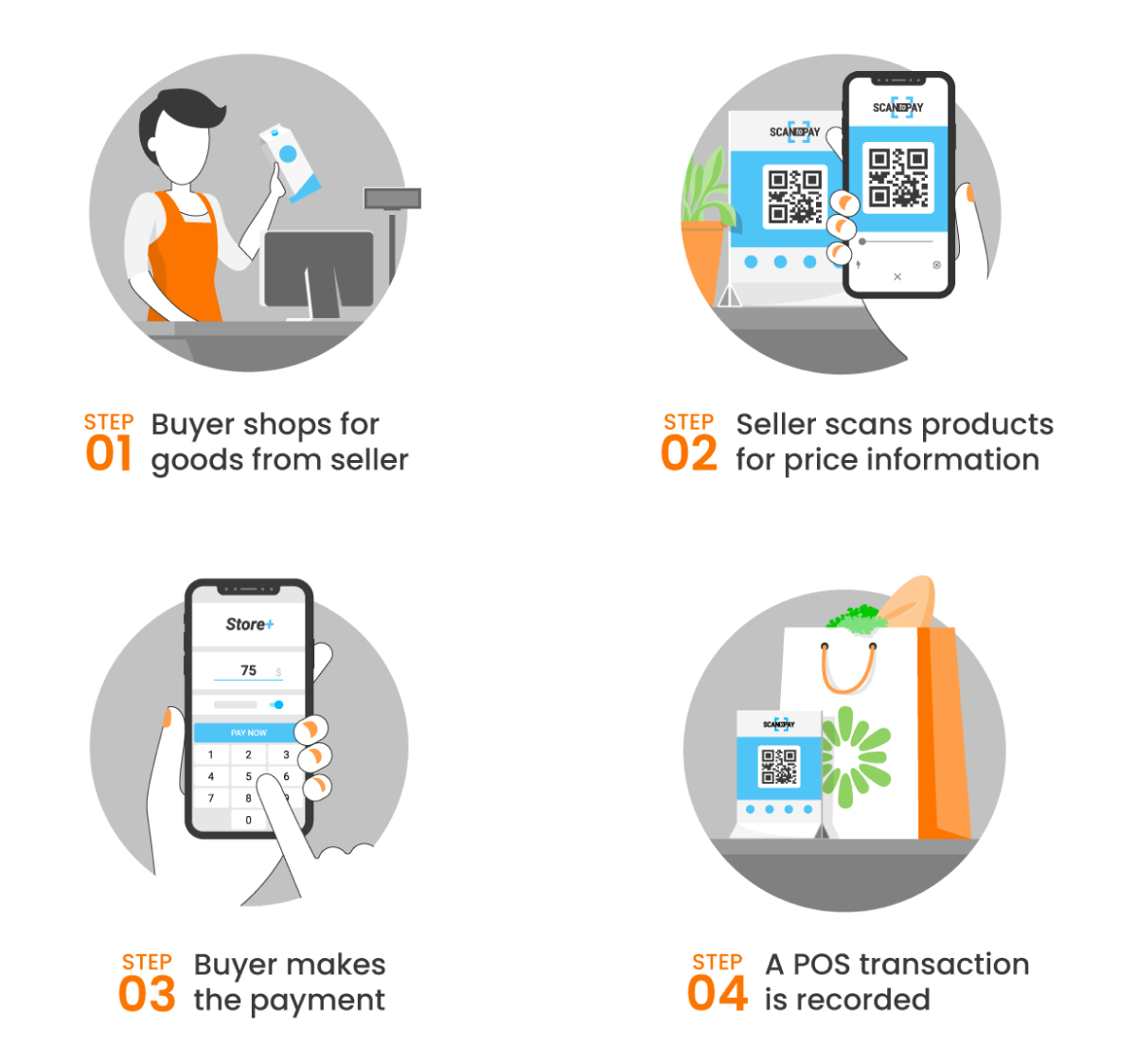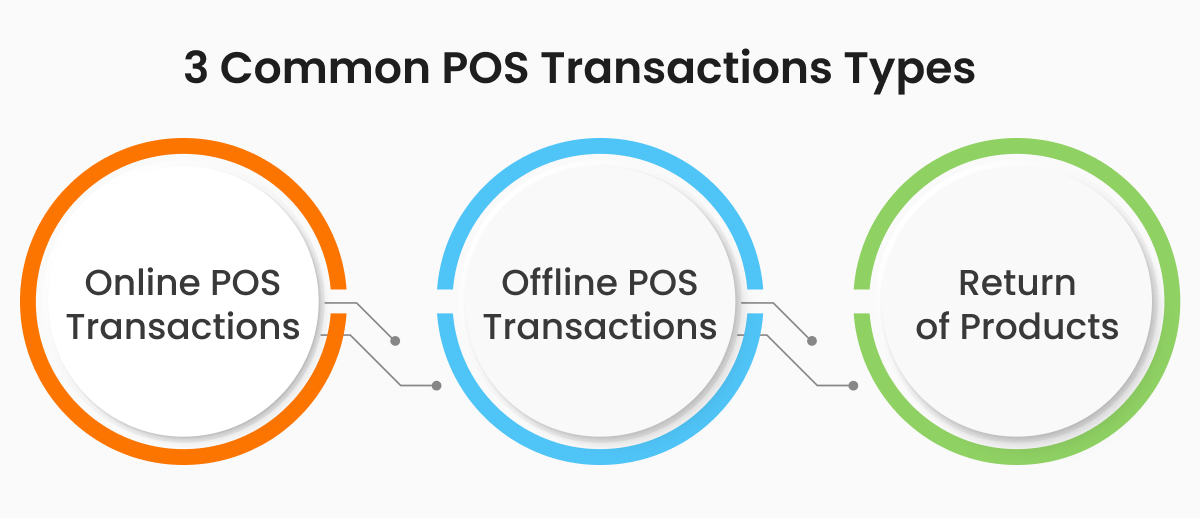Key Takeaways
- A POS transaction, short for point of sale transaction, is a financial transaction that takes place when a customer buys something from a business.
- Understanding different types of POS transactions (online, offline, and returns) helps businesses adapt to customer preferences and optimize their payment processes.
- Regular POS reconciliation ensures accuracy, stability, and security in financial transactions, reducing errors and promptly identifying unauthorized activities.

Introduction
In today’s fast-paced world of commerce, understanding Point of Sale (POS) transactions is crucial for every business aiming to thrive. These transactions mark the pivotal moment when a purchase is finalized and recorded using advanced technology.
The exchange of money at this juncture underscores the critical importance of POS transactions, directly impacting your organization’s financial health.
In this article, we will explore POS transactions in detail, giving you the knowledge and confidence to handle them effectively. So, let’s get to it.
What Is a Point of Sale (POS) Transaction?
A POS transaction, or point of sale transaction, is a financial transaction that occurs at the point where a customer makes a purchase from a business. It involves the transfer of funds from the customer’s payment method, such as a credit card or debit card, to the merchant’s account.
These transactions typically take place in physical retail stores, but they can also occur online or through mobile payment systems. The purpose of a POS transaction is to facilitate the sale of goods or services and provide a record of the transaction for both the customer and the business.
To manage these transactions, businesses deploy a comprehensive system encompassing both software and hardware components, commonly referred to as POS or Point of Sale systems.
POS hardware typically includes elements such as a credit card reader, a cash register, or even a tablet. Simultaneously, the accompanying software diligently records transaction data and effectively integrates these sales into a company’s financial records.
How Does a POS Transaction Work?
Now that we have a solid understanding of what POS transactions are, let’s explore the mechanics of how these transactions actually work. Understanding the process will give you a clearer picture of how transactions flow and how they contribute to your financial management.
Here’s a simplified breakdown of how a typical POS transaction works:
Step 1: A customer shops for goods/products from a seller. Whether it’s a retail store, restaurant, or online marketplace, the customer selects the items they wish to purchase.
Step 2: The seller scans the goods/products and shares price information with the customer. Using a barcode scanner or manually entering the item details, the seller determines the total purchase amount and communicates it to the customer.
Step 3: The buyer makes the payment. The customer selects their preferred payment method, such as a credit or debit card, mobile wallet, or cash. They provide the necessary information or physically hand over the payment to the seller.
Step 4: A POS transaction is recorded. The point of sale system captures all the transaction details, including the purchase amount, payment method, date, and time. This information becomes a vital part of your financial records and provides insights for analysis and reporting.
It’s important to note that while this is a simplified overview, the actual process may vary based on the specific point of sale system and payment methods used.
Example of Point of Sale Transaction
Let’s use a supermarket as an example to help you understand how POS transactions work. In a retail chain, you pick up a few goods and proceed to the checkout counter. The supermarket staff scans your chosen products and creates a receipt or bill. When you pay for those items with cash or a card, a POS transaction occurs.

What Are the Different POS Transaction Types?
The types of POS transactions encompass online POS transactions, conducted over the internet; offline POS transactions, typically processed through physical terminals; and product returns, involving the reversal of a prior sale.

Let’s understand the three common POS transaction types in detail:
- Online POS Transactions
When you make a purchase online, it falls under the category of online POS transactions. Let’s say you’re browsing through the Amazon app and decide to buy some jewelry. After selecting your items, you proceed to make the payment using your card or digital wallet. At this point, the POS payment is recorded. However, it’s important to note that in online POS transactions, the seller has to wait for the cash. This is because a request is sent to the card-issuing bank to either authorize the payment or debit the amount from the account.
- Offline POS Transactionst
Offline point of sales transactions occur when you physically visit a store to make a purchase. Here, the merchants conduct credit card, debit card, and cash transactions while their POS system operates offline. Imagine walking into a local boutique and buying a few items. In this scenario, the seller receives the cash instantly as you make the payment directly at the store’s point of sale.
- Return of Products
Sometimes, you may need to return a product due to issues like quality or other concerns. When this happens, a request for reversal is initiated. This means that a request is sent to the card-issuing bank to reverse the payment. The reversal can be partial or complete, depending on the circumstances surrounding the return.
How Can Merchants Accept Point of Sale Transactions?
As a merchant, there are various ways for you to receive point of sale (POS) transactions. Here are some popular methods that can streamline your payment process and enhance customer convenience:
- Card Payments: Equip your business with a card terminal or mobile card reader to accept debit and credit card payments seamlessly.
- Mobile Wallets: Embrace popular mobile payment apps like Apple Pay or Google Pay, allowing customers to make contactless payments using their smartphones.
- Online Payment Gateways: Integrate trusted online payment gateways such as PayPal or Stripe into your e-commerce store to facilitate secure online transactions.
- Cash Payments: Accept physical cash payments by setting up a cash register and implementing proper cash handling procedures.
- QR Code Payments: Display a unique QR code for customers to scan and make payments swiftly, particularly useful for small businesses or pop-up shops.
By offering a variety of payment options, you can cater to the preferences and needs of your customers, ultimately enhancing their shopping experience and boosting your business’s revenue.
Managing POS Transactions And Cash Reconciliation In Business
Understanding how a POS system handles day-to-day transactions and accurately reconciles cash from POS payments is essential for business operations. Effective management of POS transactions and cash reconciliation involves overseeing sales processes, ensuring accurate financial records, and leveraging data for business decisions. This approach promotes efficiency, reduces errors, and provides insights for improving operational performance and profitability.
POS Reconciliation: Ensuring Accuracy and Transparency
POS reconciliation is a crucial process where businesses match POS system transactions to those on the company’s bank statement and books. Once payment is received from the point of sale, sellers compare POS data with the daily, monthly, or yearly sales to ensure complete accuracy and transparency. In essence, they compare POS sales data with cash inflows.
Managing POS Transactions: From Sale to Record
POS transactions begin when a customer selects items for purchase and proceeds to checkout. The cashier enters these items into the POS system, which calculates the total amount, including taxes and discounts. The customer then pays using cash, credit/debit card, or other accepted methods.
Once payment is received, the POS system records transaction details such as items purchased and payment method. It also updates inventory records to reflect items sold, helping businesses monitor stock levels in real time.
Cash Reconciliation: Verifying Transactions
Cash reconciliation ensures all transactions recorded in the POS system match actual cash and card payments received. At the end of each day or shift, cashiers count the physical cash against the POS system’s recorded sales to identify any discrepancies. These discrepancies are investigated to prevent errors or theft.
Financial Reporting and Analysis: Leveraging Data
Businesses use POS systems for financial reporting and analysis, generating reports on sales trends, popular products, and revenue. This aids decision-making for inventory management and marketing strategies. Integration with accounting systems automates financial processes, simplifies tax reporting, and ensures compliance with regulations.
What are the benefits of POS reconciliation?
POS reconciliation and POS transactions are closely related because they both verify each other’s data. The reports generated by a POS system are checked against the data used in POS reconciliation methods. This ensures that cash inflows and outflows are accurately recorded.
Let’s look into the top benefits offered by POS reconciliation
- Eliminating Accounting Errors: The reconciliation process eliminates potential human errors in financial calculations, ensuring data analysis is precise.
- Securing Business Deposits: By cross-checking data, businesses can accurately determine the cash available, enabling better predictions for future investments or purchases.
- Promoting Stability: POS reconciliation enhances financial management stability by providing an exact overview of available cash, allowing businesses to plan ahead effectively.
- Identifying Unauthorized Transactions: Reconciling sales and purchase data helps detect unauthorized transactions, minimizing the risk of unnecessary cash outflows.
By integrating this process with POS transactions, businesses can streamline financial operations and make informed decisions based on reliable data.
POS Charges and Fee
POS Fee refers to a charge imposed by banks or payment processors for handling transactions done through a Point of Sale (POS) terminal.
The POS fee is charged considering the following:
- Purpose: The POS Fee covers the expense of processing debit or credit card payments made at a store. It reimburses the payment processor for managing the electronic transfer of money between the customer’s bank and the seller’s account.
- Transaction Type: This applies specifically to transactions where customers pay for goods or services using a debit or credit card in person, usually by swiping or inserting their card into a POS terminal.
- Fee Structure:
The fee can vary based on:
- Transaction Volume: Businesses with more transactions may negotiate lower fees.
- Merchant Agreement: Terms are typically outlined in contracts between merchants and payment processors.
- Card Type: Fees may differ for debit and credit cards, and across card networks like Visa or Mastercard.
- Components:
The POS Fee may include:
- Merchant Discount Fee: A percentage taken from each transaction by the payment processor.
- Transaction Fee: A fixed fee per transaction.
- Additional Charges: Other fees like PCI compliance or network fees may also apply.
- Impact on Merchants: For businesses, POS Fees add to the total cost of accepting electronic payments. Higher fees can reduce profit margins, especially for smaller businesses.
- Regulation and Transparency: Some regions have rules about how POS Fees are disclosed to merchants and customers. This ensures clear pricing and prevents unfair practices.
Overall, the POS Fee is a standard expense for merchants accepting card payments in-store, covering the infrastructure and services provided by payment processors for these transactions.
Enhancing Business Efficiency and Security with B2B Payment Gateways
Adopting B2B payment gateways for POS systems significantly improves efficiency and security in financial operations. These gateways function like online versions of traditional POS terminals, ensuring safe online payments through encrypted data transmission, thereby reducing fraud risks associated with card payments.
B2B payment processing software automates financial transactions between businesses, optimizing the process and minimizing manual errors. This saves time, enhances accuracy, and speeds up payment processing, which is crucial for maintaining cash flow, especially for smaller businesses.
Current trends in B2B payment gateways highlight advanced technologies such as blockchain for enhanced security and transparency, AI for efficient fraud detection, and mobile payment platforms for flexibility. Integration with ERP systems ensures smoother financial data flow, aiding in financial planning and overall business operations.
How HighRadius Can Help Enhancing POS Efficiency Through B2B Payment Gateway Integration
HighRadius offers a robust B2B payment gateway that can significantly enhance Point of Sale (POS) operations for businesses. By integrating B2B payment capabilities with POS systems, businesses can streamline transaction processing and enhance efficiency. Payment gateways facilitate seamless integration with existing POS infrastructure, allowing for swift and accurate processing of transactions without disruptions. This integration supports multiple payment methods, including credit cards, ACH payments, and electronic fund transfers (EFTs), catering to diverse customer preferences and improving the overall purchasing experience.
B2B payment gateways enhance security measures by employing robust encryption and compliance with industry standards like PCI-DSS, safeguarding sensitive payment information and reducing fraud risks. Real-time payment validation ensures prompt confirmation of transactions, optimizing cash flow management and providing businesses with greater financial control. The streamlined reconciliation and reporting capabilities offered by payment gateways enable businesses to maintain accurate financial records, analyze sales trends, and make informed decisions swiftly. Ultimately, leveraging B2B payments through payment gateways not only enhances operational efficiency at POS but also fosters growth by accommodating increased transaction volumes and improving customer satisfaction through seamless payment experiences.
FAQs
1. Are POS system transactions safe?
Yes, POS system transactions are generally safe when appropriate security measures are in place. POS systems are designed to handle secure transactions by encrypting sensitive data such as credit card information.
2. Can a POS transaction be traced?
Yes, a POS transaction can be traced through bank statements.
3. What is the common POS transaction fee?
Point of sale transaction fees may vary based on the type of transaction and the POS system used. Generally, POS fees are charged per transaction.
4. What are the common errors that occur on POS?
Common errors that can occur on a POS system include pricing mistakes, inventory discrepancies, transactional errors, and technical glitches.
5. How long does a POS transaction take?
The duration of a POS transaction can vary depending on factors such as the payment method used, the efficiency of the POS system, and the complexity of the transaction. However, in most cases, a POS transaction takes only a few seconds to complete.
6. What is a POS purchase?
A POS purchase, or Point of Sale purchase, refers to a transaction where a customer buys goods or services from a business at the physical location where payment is made, typically at a cash register or checkout counter.
7. What is a POS payment?
POS payment refers to a transaction where a customer makes a payment for goods or services at the point of sale, typically using a credit or debit card. This is commonly used in retail stores, restaurants, and other businesses where customers physically visit the establishment to make a purchase.
8. What is a POS experience?
POS experience is the overall interaction customers have at the checkout in retail or business settings. It includes transaction ease, service speed, staff friendliness, payment options, and checkout atmosphere. A positive experience encourages return visits, while a negative one may deter future purchases, impacting customer loyalty and business reputation.











